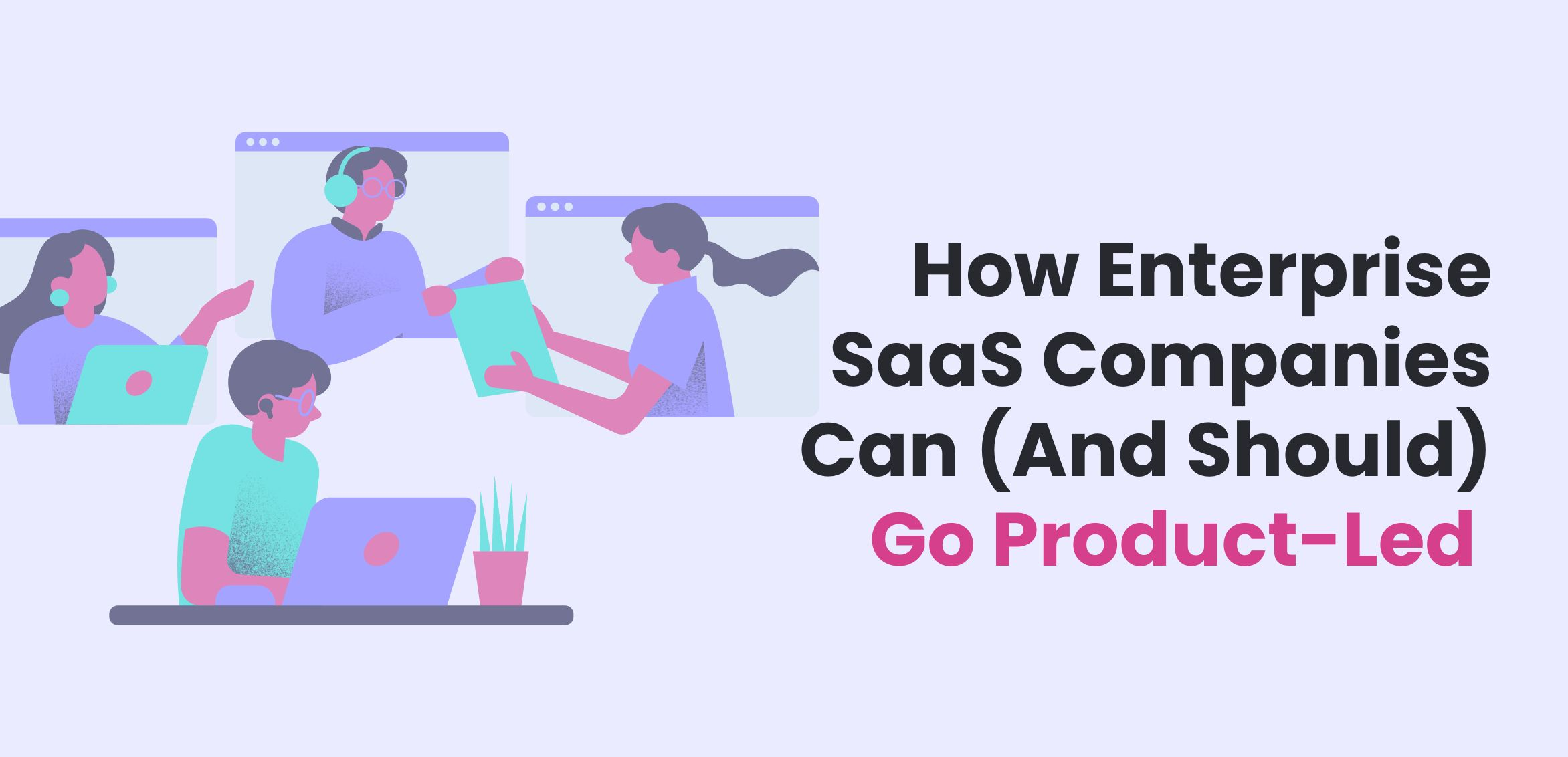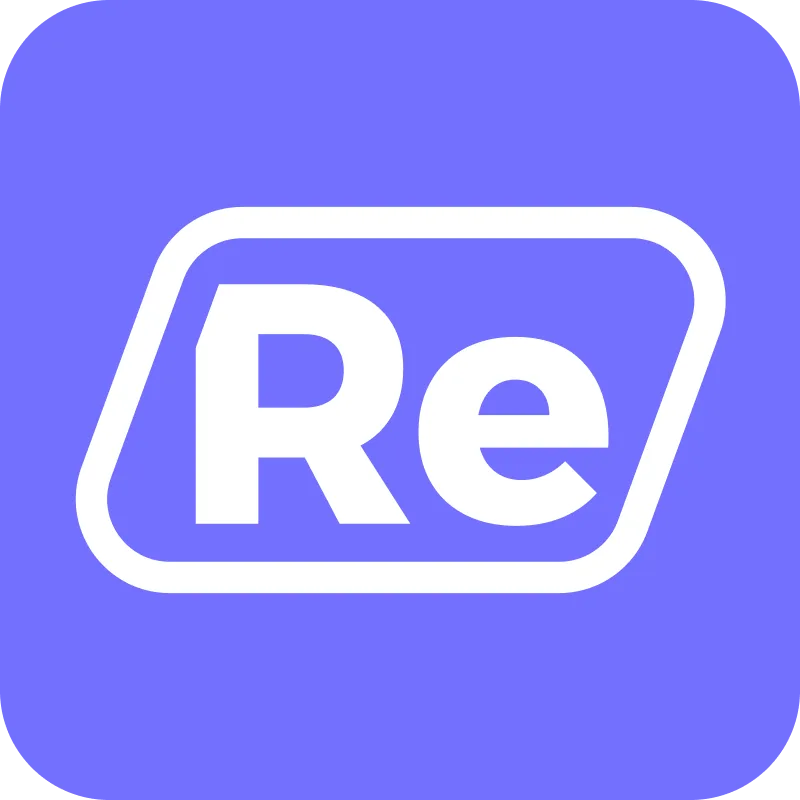Accelerate deals and increase win rates with the leading enterprise demo platform.
How Enterprise SaaS Companies Can (And Should) Go Product-Led

February 12, 2025
Table of Contents
A couple of years ago, product-led growth companies were the scrappy little underdogs of the SaaS industry. They launched without a sales team and focused on growing users and grabbing attention, but they were easy to write off for a while as a niche market.
Not anymore. Today, the OG PLG companies like Dropbox and Slack are some of the biggest enterprises in the SaaS world, and 40 large public companies are using a PLG model. That’s made a whole lot of other enterprise companies nervous—do we need to start offering free trials or a freemium model to survive, they wonder (and their investors are asking them the same thing).
Well, we’re here with both bad and good news. Yep, you do need to make the switch to a product-led approach, no question about it. But it’s easier than ever, and it’s also a lot easier than you think—even for the biggest enterprise.
Why Enterprises Need PLG
Enterprise companies need to embrace PLG for the same reason companies of all sizes do, and it’s not because it’s the current buzzword. It’s because PLG is how your buyers want to buy software today.
They want to get their hands on your product as soon as possible to see and experience it for themselves. Sellers prefer it too because they’d rather talk to someone who’s already gotten their hands on the product. And executives prefer it because it’s less expensive to acquire customers who are already part of your fanbase because they’re users.
Let’s be real, we’re just not going back to a world where you can gatekeep your product from your prospects. The product-led world is here to stay.
But as the buyer journey has evolved, so has PLG. It’s no longer just about free trials and freemium products—there are many ways to incorporate PLG into your GTM motion like little product snacks, usage-based pricing, and interactive demos.
That means there’s a motion that works for your company, no matter how complex and complicated your enterprise solution is. And using PLG doesn’t mean you need to ditch your sales playbook (or your sales team), because most companies use a mix of PLG and sales-led tactics.
How Enterprise Companies Can Become More Product-Led
So how, exactly, should your company become more product-led so you’re not left behind? Here are a few actionable ways you can start to make the shift to PLG by showing your product sooner.
Lean Into Transparency
One of the biggest differentiators the OG PLG companies have is in their transparency, particularly in pricing. For most enterprise SaaS companies, prospects head to the pricing page hoping to find, well, a price, and instead see anything but that (talk about a bait-and-switch).
Slowly but surely, the default leans to more and more transparency. Even if you think it’s too challenging or confusing to add in prices because it depends on many factors, prospects are going to be turned off if they don’t see a single price on your pricing page.
Resist the urge to gate wherever possible (and if it doesn’t seem possible anywhere, you need to start considering why everything in your enterprise needs to have a gate).
That’s true for your prices but also for your product. Buyers don’t want to play games or jump on multiple calls to see how your product works and how much it costs when they can simply head to a competitor’s site and find all of that and more.
Instead, try something like what EvaluAgent did for their top-of-funnel prospects: give them access to interactive guided product tours on their website to generate more qualified prospects (and they’re more educated as well).
Get Rid of Your Siloes
PLG is not something your product team or marketing team can unilaterally implement. You need to work very closely with all the teams with a piece of the puzzle, from sales to marketing to product marketing and beyond. Honestly, customer success should be included too because PLG is also about upselling and cross-selling to your existing customers.
And your PLG efforts should be combined with your sales playbook too—they’re stronger together. PLG might bring in prospects with website product tours, and your sales team jumps in once they request a longer custom demo or a sales call.
Or your sales reps can use short interactive demo leave-behinds (that’s PLG!) after a traditional discovery call. You don’t need to embrace one and abandon the other, in fact it’s quite the opposite.
Get rid of as many siloes as you can, in how your teams operate and your sales motion alike.
Iterate and Experiment Often
You need to iterate and experiment much more in PLG than in traditional sales. In sales, what works in one company tends to be pretty effective for another company in the same industry—like the glory days of the discovery call.
But PLG is incredibly individual. There’s no playbook you can run that will immediately work flawlessly for your company, even if you’re copying a hyper-successful competitor.
That doesn’t mean you need to start from scratch. Instead, take playbooks and notes from other companies (enterprise or not) who have made the transition and then keep testing and learning to see what works, what needs adjusting, and what should be tossed out.
Experiment with everything you can think of. One great thing about PLG is it gives you tons of data to work with (more on that in a minute), and you still have access to your existing customers too for feedback conversations. With all of that info and a flexible attitude and approach you can test and learn until you succeed.
Dig Into the Data
One final way enterprises can make PLG work is by making customer data and analytics much more accessible and understandable to people in many different roles. Unlocking your data can help all of the teams who make PLG happen.
- Marketing needs to see who watched your website product tours and where they spent the most time interacting.
- Sales needs to know which prospects have hit certain inflection points that mean their likelihood of converting has skyrocketed (that’s how they get product-qualified leads or PQLs).
- Product marketing needs data about which demos in your reusable demo library are viewed the most and which ones are converting the most.
- Customer success needs to know who’s not using the features that unlock the most value when customers are about to renew or cancel their contract.
All of these data points help each team do their job more effectively. But many enterprise orgs have stored that data in too many different places, or make it hard for all the teams to access and analyze and use it. Free your data and you’ll unlock your PLG capabilities.
Looking for a way to add a PLG motion right now? Reprise makes it easy to add interactive reusable product tours and live sales demos to your GTM motion so your buyers can experience your product first-hand.






